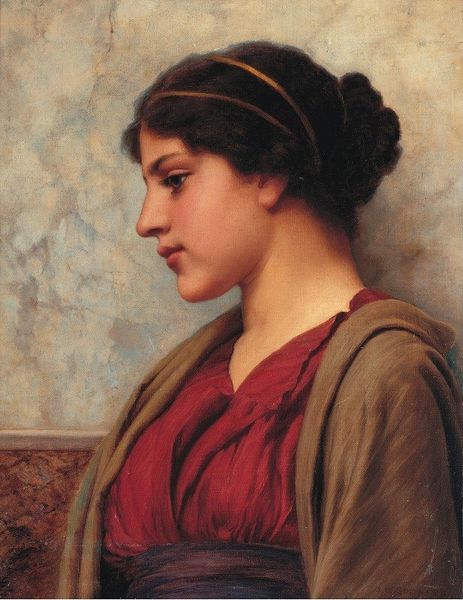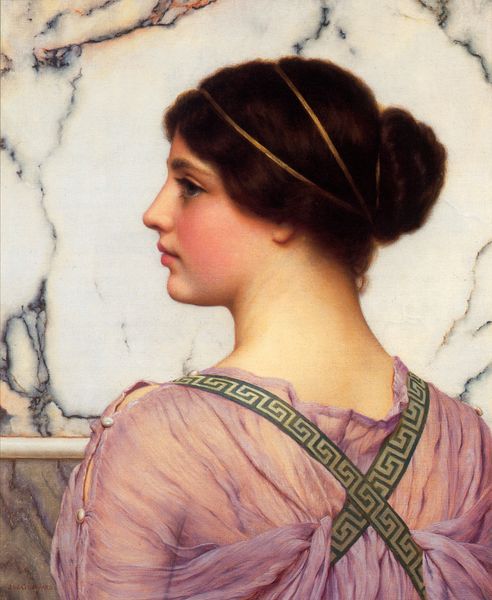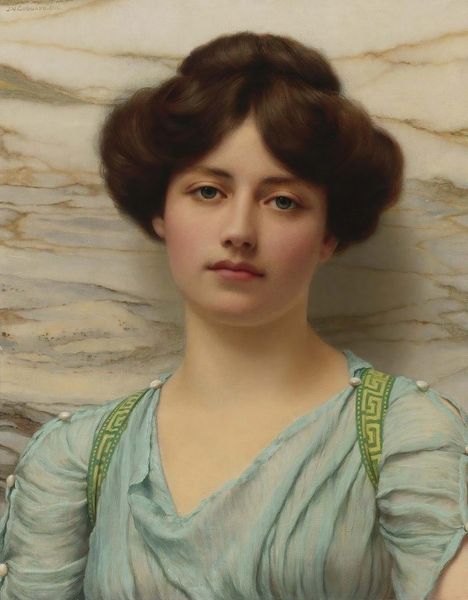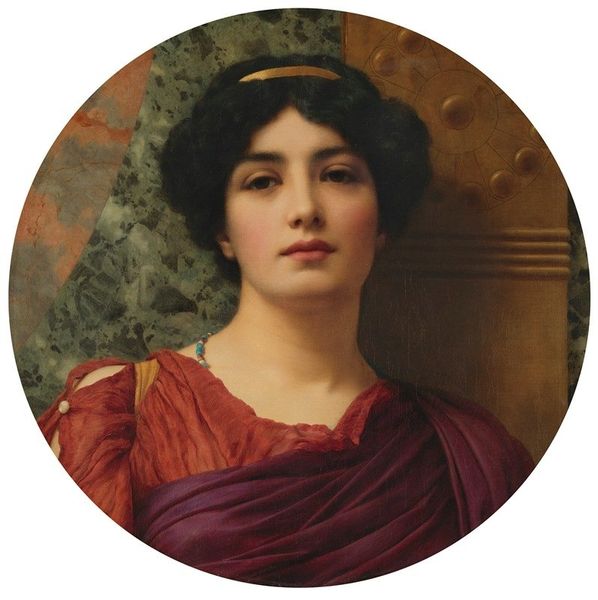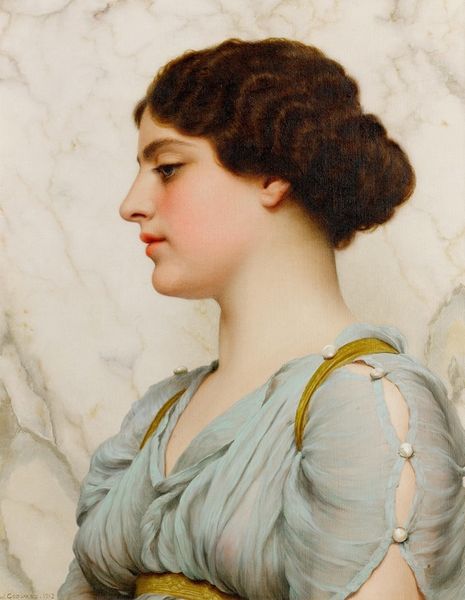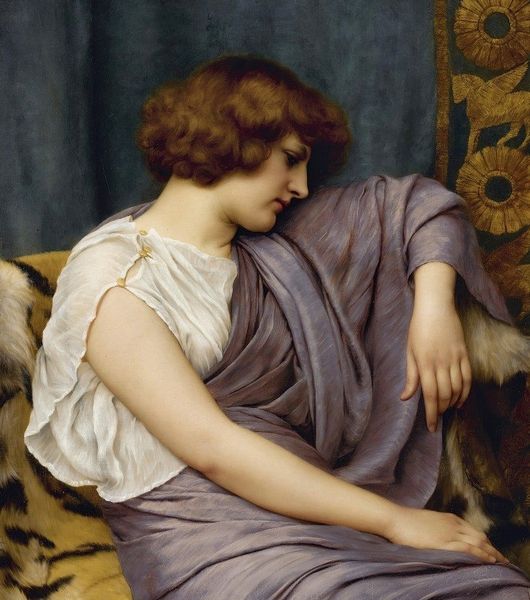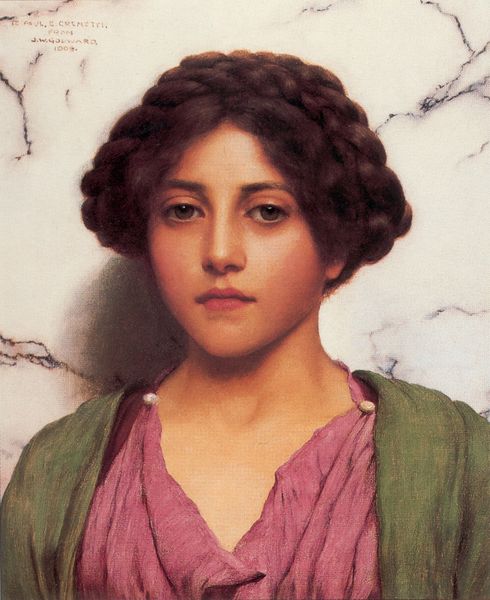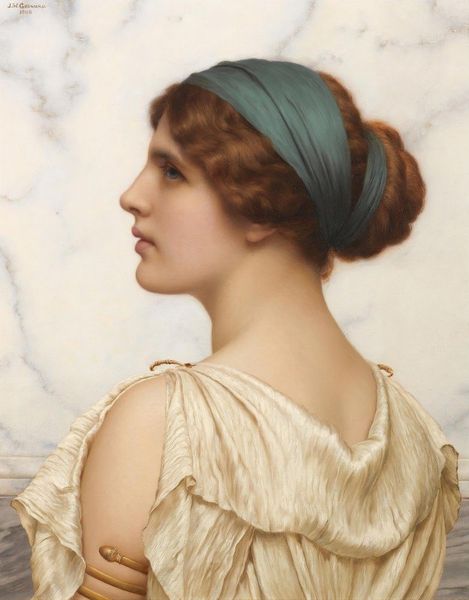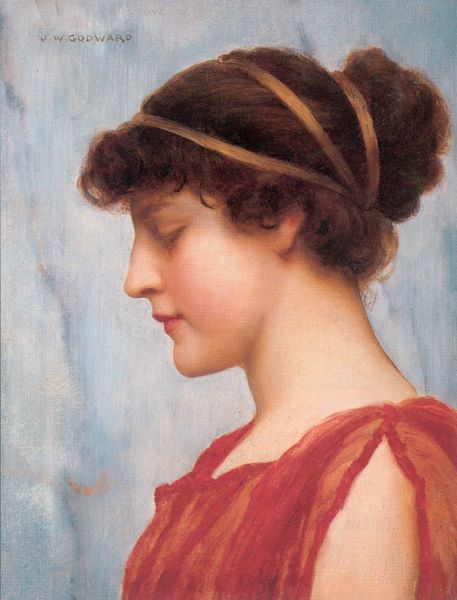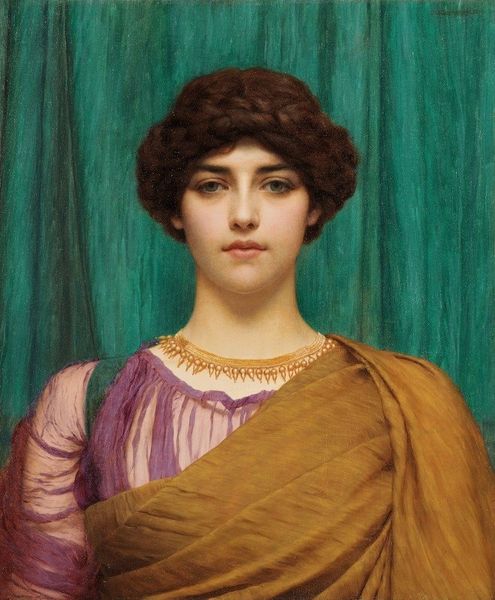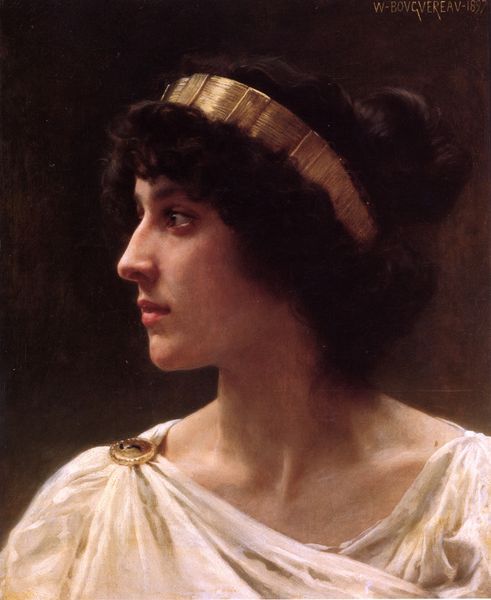
painting, oil-paint
#
portrait
#
figurative
#
neoclassicism
#
painting
#
oil-paint
#
portrait subject
#
figuration
#
portrait reference
#
portrait head and shoulder
#
animal drawing portrait
#
portrait drawing
#
history-painting
#
facial portrait
#
academic-art
#
portrait art
#
fine art portrait
#
realism
#
celebrity portrait
#
digital portrait
Copyright: Public Domain: Artvee
Editor: This is John William Godward’s “Stesicrate,” painted in 1914. There's such a melancholic air to her, like she's caught in a moment of quiet contemplation. What catches your eye when you look at it? Curator: The symbols speak volumes. The marble, the meander pattern—these aren't just decorative; they’re deliberate allusions to classical antiquity. They evoke a cultural memory, a longing for an idealized past. And that lowered gaze, does it suggest resignation or quiet defiance? It’s potent. Editor: Defiance? I mostly see a subdued acceptance. Curator: Perhaps. But think about the period. In 1914, the world was on the brink of war. Could this painting be an allegory for a world about to be lost, clinging to the values of the past? That cool color palette even adds a sense of foreboding. What do you make of the subject's simple attire? Editor: It makes her seem accessible. Not idealized like a goddess, but human. Curator: Precisely! Godward walks a line between classical idealism and realistic portraiture. He gives us a woman steeped in history, yet palpably present. A figure caught between worlds, echoing a sentiment perhaps very current to audiences then, and even now. Editor: I never considered how contemporary anxieties could seep into something that seems so rooted in the past. Curator: Art always holds a mirror, doesn't it? It reflects not just the subject, but also the anxieties and aspirations of its time. “Stesicrate” invites us to ponder our own relationship with history and beauty. Editor: It definitely gives me a lot to think about. It's amazing how much history and emotion can be packed into one image.
Comments
No comments
Be the first to comment and join the conversation on the ultimate creative platform.

